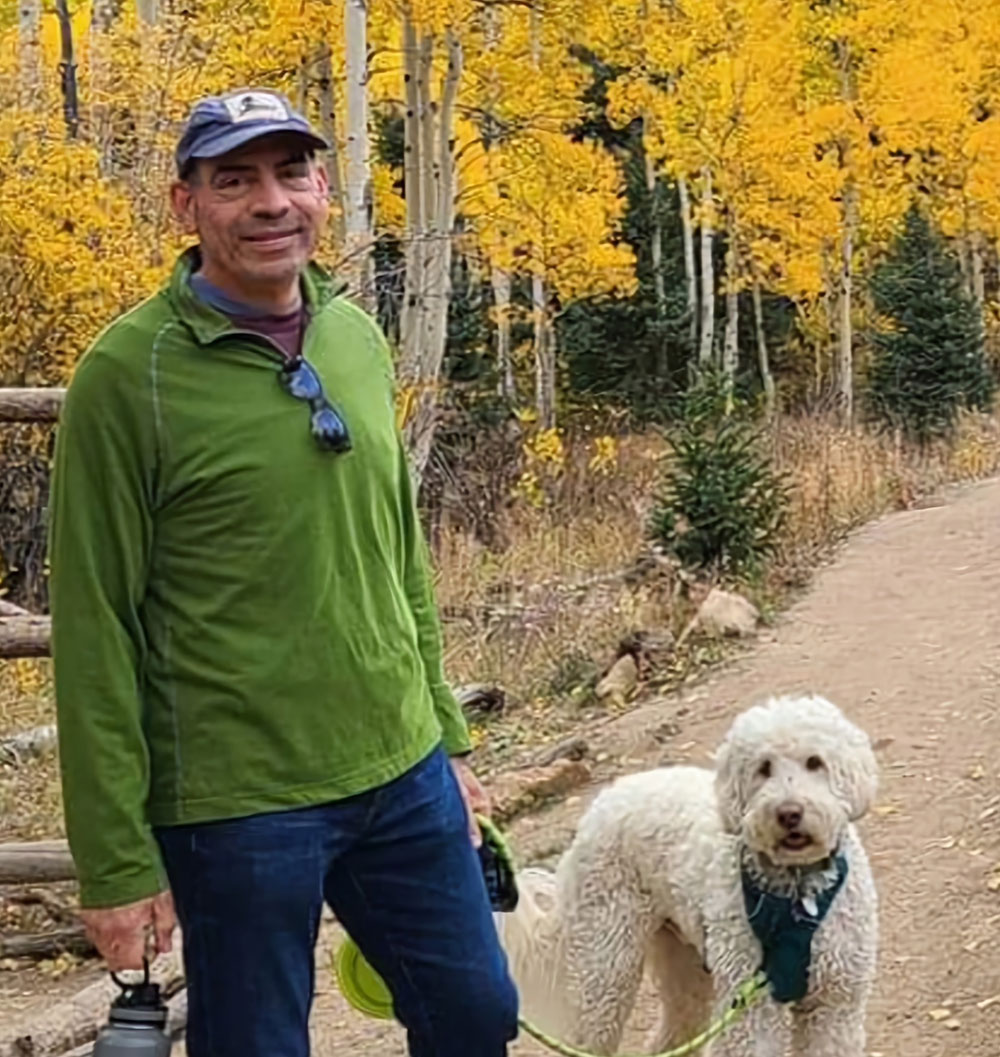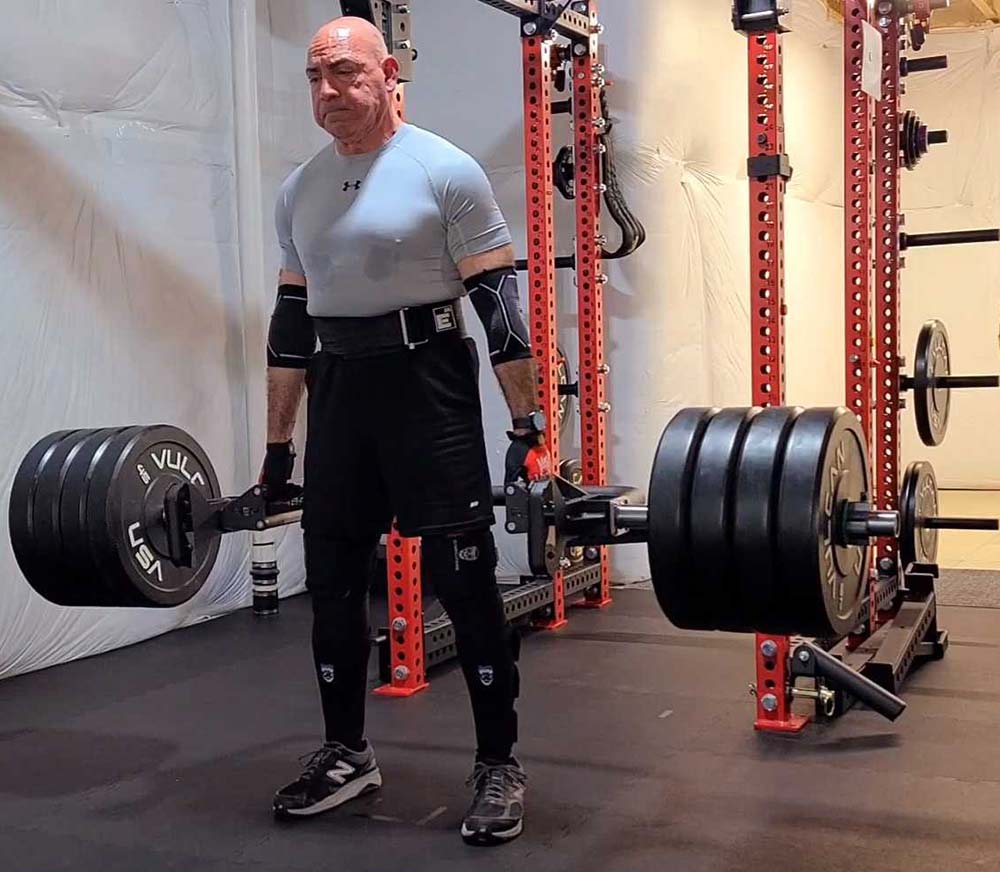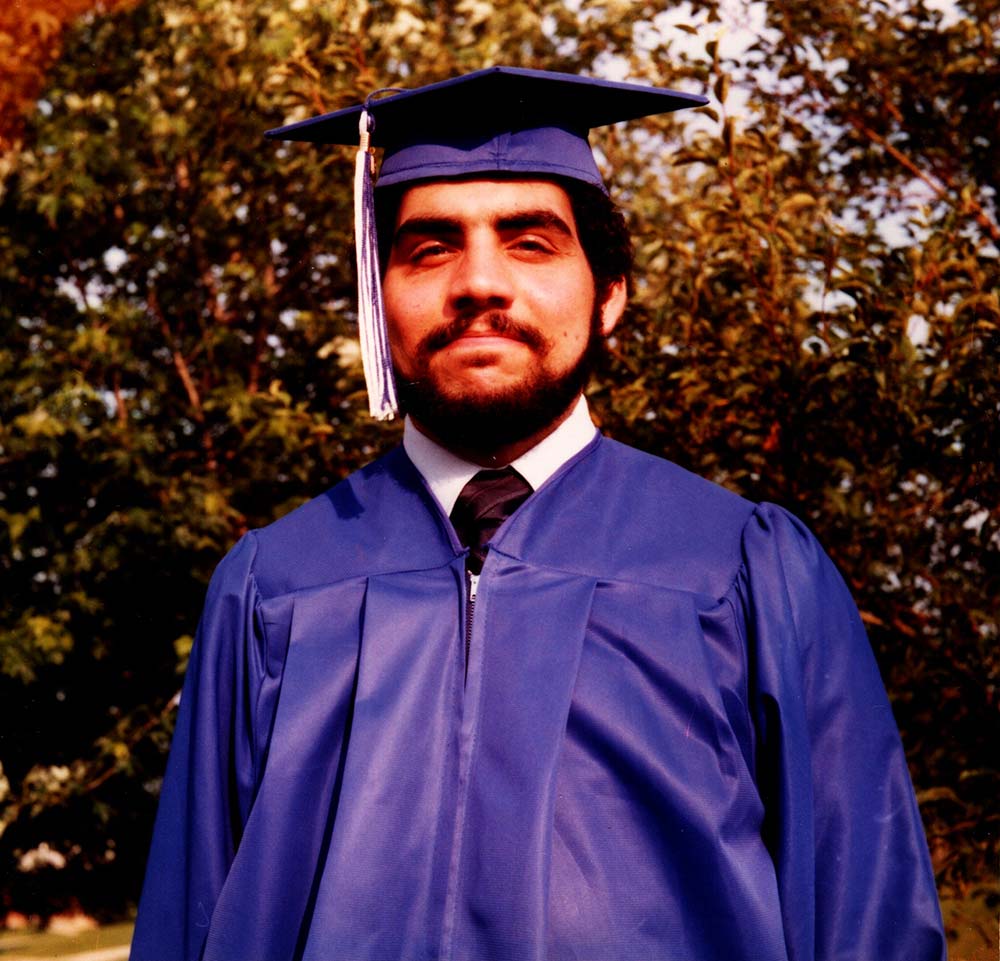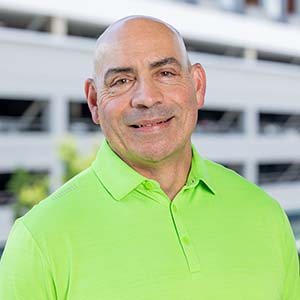The Arab-American story: A silent minority
Growing up the loneliest boy in Forest Park
- Publish Date
- Authors
- Ed Frank
I turned 60 this June. Right after my birthday, I attended my first Test Double retreat—and the first one we’ve been able to hold since COVID. I was gratified to be treated as part of the team. But in some ways, I was also one-of-one … the only sexagenarian and certainly the oldest person in attendance.
To many, I’m sure I look like just another old white guy (born in the penultimate year for Baby Boomers).

To be clear, I don’t see myself as an old white guy. In fact, the only part of that statement that rings true to me is that I do identify as male.
To begin with, I don’t see myself as old.

Yep, that’s me lifting 435 pounds during a day where I also benched 225 pounds and squatted 350 pounds (a total of 1010 pounds).
Secondly, and probably most importantly, I don’t see myself as White. My father was the son of Lebanese immigrants, and my mother was born in Jerusalem and was Palestinian. I am technically a second-generation American, and I identify as an Arab-American.
As a child, I grew up blissfully unaware that I or my family were different from others in Forest Park, Ohio. I suppose I wasn’t very aware, or self-aware enough to notice. Our two-story house was home to my parents, my aunt (mom’s sister), my two older sisters, and me. It never occurred to me that when my mom and aunt spoke Arabic, that would be considered odd. However, things changed as I grew older …
This is what I looked like when I graduated from high school.

In my class of 425 graduating seniors at Forest Park High School, I was the only Arab-American. In fact, I was the only Arab-American teenage boy in all of Forest Park.
It wasn’t until I was a teenager that I became painfully aware of my differences. At 13, one of my best friends made fun of my mother’s accent and word choices. At 15, I realized my aunt would just refer to herself as French when asked about her heritage to avoid the hassle. When I was 16, I heard the story from my dad’s older sister of the bigotry he faced when he wasn’t selected valedictorian of his high school class—despite the fact he earned it. He then couldn’t find a doctor who would sponsor him for medical school and had to pick a different major.
And it didn’t stop with my family.
At Forest Park High School, I was too dark to be considered White by my White classmates and too light to be considered Black by my Black classmates. I was essentially an affinity group of one. My strategy to get through high school was to just go along with everybody, laugh at their jokes, and try to forget that I was different. I was in advanced classes, played football (where I had lots of Black and White teammates), and even hung out with the kids smoking pot. Yep, I didn’t really identify with any of the nerds, jocks, or heads, but I hung out with them just to survive.
Of course, it didn’t help. In the mid-70s, America became aware of the Palestinian Liberation Organization (the PLO) and the activities they pursued that were classified as terrorism. On TV, in newspapers, and in magazines, people who looked like me were being branded as terrorists. It wasn’t long before classmates would joke about not getting Ed mad; he might just blow himself up.
I couldn’t wait to get the hell out of Forest Park, and when I graduated, I decided to go to Ohio State. I think I subconsciously chose Ohio State because there had to be a lot more diversity in a student population of 54,000. I breathed a sigh of relief.
During my freshman year, I seemed to find a lot of friends who were marginalized in one way or another, and I connected with them instantly:
- One of my best friends, Kim, a second-generation Filipino-American
- My suitemate, Ed (yes, another Ed), an army reservist who was out and became the secretary of the OSU Gay and Lesbian Alliance (they were happy to let me listen in to their GALA meetings held in our suite)
- Another suitemate, John, a Jewish kid from Cleveland
- My Black roommate Larry, from a tough neighborhood in the Akron-Canton area
- A whole host of nerdy folks introduced me to Dungeons and Dragons (and, unfortunately / fortunately Scotch)
Throughout my undergraduate years at OSU, I continued to expand my group of marginalized friends: Punks (we hung out at a bar called Crazy Mama’s), Asians and Asian-Americans, Native Americans, Indians, Muslims, Hindus, etc. Really, almost every type of person, but interestingly, not a single Arab-American. I couldn’t find any place where my people hung out.
Despite being friends and friendly with everyone and the significant diversity that OSU offered, I couldn’t escape the bias and stereotype of being an Arab-American.
I was a Resident Assistant at Morrill Tower. One evening, most of my fellow RA’s and I decided it would be fun to TP our Hall Director’s office. As part of the team, I was photographed in mid-action and thoroughly enjoying myself …

Later, the photographer and a fellow RA gave me a copy of the picture. And on the back, she wrote …
“F.Y.I A P.L.O. in T.P.”

Yep, I couldn’t escape my heritage, even at a place as diverse as Ohio State … I was devastated.
Over my adult years, there have been plenty of slights and uncomfortable moments, going out to lunch in Little Rock, having beers at a local bar after a softball game, or going through an airport. I always felt people were looking at me.
If I showed any anger at all, it could really send people over the edge.
OMG AN ANGRY ARAB! Run for it!
So, I tried to smile and be convivial so as to not have others get uncomfortable. Didn’t always work, by the way … And don’t get me started on what it felt like being identified as an Arab-American post 9/11.
Awareness of conscious and unconscious biases towards me has always been an inspiration. I try to always treat everyone fairly and seek out marginalized people to provide support and coaching in my personal or business life. Women. LGBTQ+ people. People on the spectrum. People of Color. People who just want to live their authentic lives. Interestingly enough, the number of Arab-Americans I have helped in this way can be counted on one hand.
Why are there so few Arab-Americans on my list? Because there are so few of us in the United States. There are only about 4MM Arab-Americans (an estimate, as there is no official US Census count), or about 1% of the total US population.
FWIW, in this country, the U.S. census surveys only allow an individual to report as White, Black or African American, Asian, American Indian and Alaska Native, Native Hawaiian and Other Pacific Islander, or some other race. Officially the U.S. Census requires people with Middle Eastern or Northern African (MENA) heritage to classify as white. You can imagine the irony of that to Arab-Americans. There is a push to add a MENA classification to the U.S. Census, but this still has not been adopted after 30 years of advocacy.
The hardest part about being an Arab-American in this country is that we are incredibly diverse, without a centralized presence and voice to focus and organize us. And let’s face it, very few people (other than hard-to-find fellow Arab-Americans) really seem to want to hear about our unique and painful experiences. Some Arab-Americans are just happy to pass as white-enough to get by and don’t want to bring attention to themselves. Others (including me) feel guilty even bringing it up—especially when compared to the significant challenges that other persecuted groups have faced and continue to face in America.
During the most recent EDI training we had, I really could empathize with every person who is seen as different. We have every right to be angry that in 2023 America, there is still too much bias and bigotry for marginalized people to feel safe (which seems like a ridiculously low bar). I was angry, too, not just for all those who I empathize with but also because I didn’t speak up.
Why didn’t I speak up? I know how I look. I understand that providing the context of my life would take a lot of time. And I also realize I am in a position of privilege here at Test Double, so I simply stayed silent. I felt that I would be perceived as self-aggrandizing, and I didn’t want to take away from anyone else’s experiences.
So, I sat there and seethed in silence and tried to not look angry.
Something needs to change, and I really don’t want to be silent about it anymore …
Join the conversation about this post on our N.E.A.T community
Not a N.E.A.T. community member yet? More info.
Ed Frank
- Status
- Double Agent
- Code Name
- Agent 00141
- Location
- Castle Rock, CO
